Equity compensation is an important part of any total rewards strategy, but it can be hard to get right. There aren’t standardized industry best practices, vesting schedules and structures vary, and traditional benchmarks don’t account for critical nuances.
It can be challenging for compensation leaders to identify what good looks like and determine how to use equity as a competitive differentiator.
Here, we rounded up four of the latest equity compensation trends shared by Pave Founder & CEO Matt Schulman on Linkedin, sourced from Pave’s real-time compensation dataset of over 8,000 leading companies. Click through to Matt’s posts to see additional analysis and comments from the community—and be sure to follow Matt for more insights every week.
1. Equity Refreshes Aren’t a Guarantee—Unless You’re a Top Performer
Equity refreshes used to be a given. Stay with the company for another year, and you get a new equity grant.
But with economic uncertainty and budget constraints, many companies are tightening the reins. Today, most compensation leaders are using equity strategically, basing grant eligibility on job performance and job function to attract and retain top-tier talent.
Findings from Pave’s Merit Cycle State of the Union report show:
- Nearly 100% of promoted employees received ongoing refresh equity
- ~50-75% of employees rated “above expectations” received an equity refresh
- ~20-30% of employees with a “meets expectations” rating received ongoing equity
But that’s not all—job function plays a role, too. Employees in the Research & Development (R&D) function receive refresh grants more often than other departments, even when given the same performance rating.
- 78% of “above expectations” R&D folks receive equity refreshes
- 29% of “meets expectations” R&D employees receive equity refreshes—compared with 19% in Sales
Check out the complete report for more merit cycle insights.
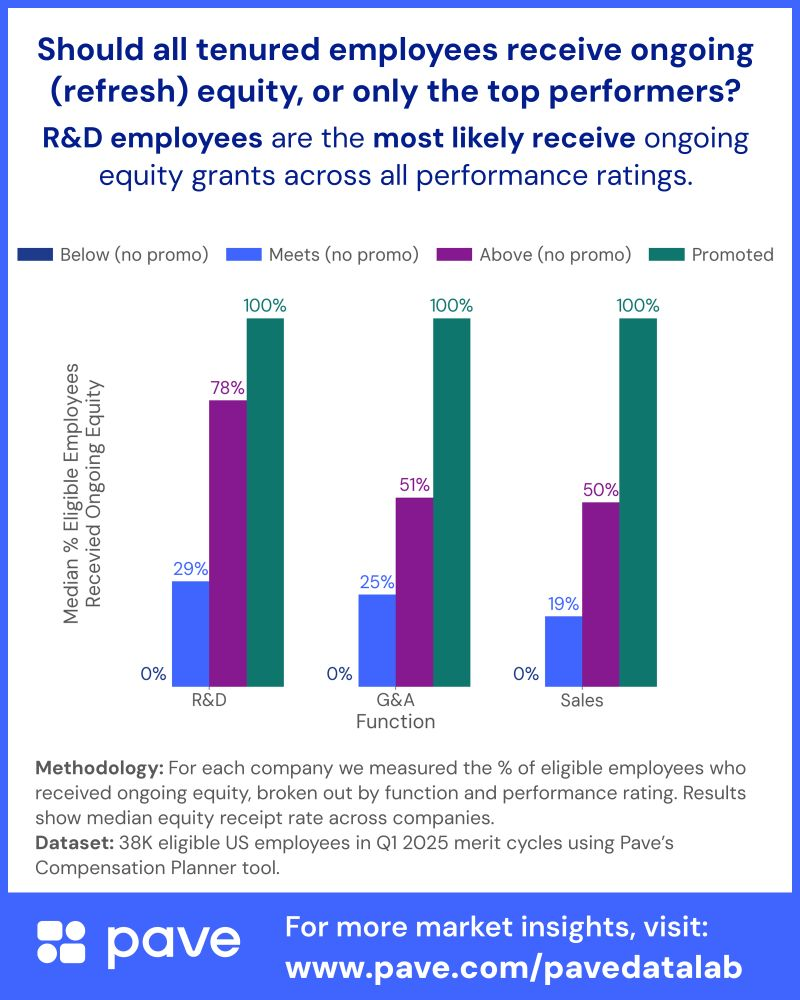
2. Geo-Discounting Is More Pronounced for Equity Compensation Than Cash
Most companies implement geo-discounts within the US to set salary ranges—employees based in Tier 2 or Tier 3 cities are paid less than those in Tier 1 cities (New York City, San Francisco, and Seattle).
When it comes to equity compensation, the differences in equity grants between these tiers are substantially higher.
Here’s what Pave’s data shows:
- Tier 1 → Tier 2 Discounts:
- 11% for cash
- 29% for equity grants
- Tier 1 → Tier 3 Discounts:
- 16% for cash
- 36% for equity grants
So, why are the geo discounts larger for equity?
Competition for talent in tier 1 cities like San Francisco and New York is fierce—but salary ranges are often relatively fixed. By increasing the size of a new hire equity package, companies can attract and close coveted talent that may have other offers in hand.
Another hypothesis for this trend is the variance in equity perception across US metros. In the Bay Area, for example, equity may be seen as more valuable than in tier 2 or 3 cities.
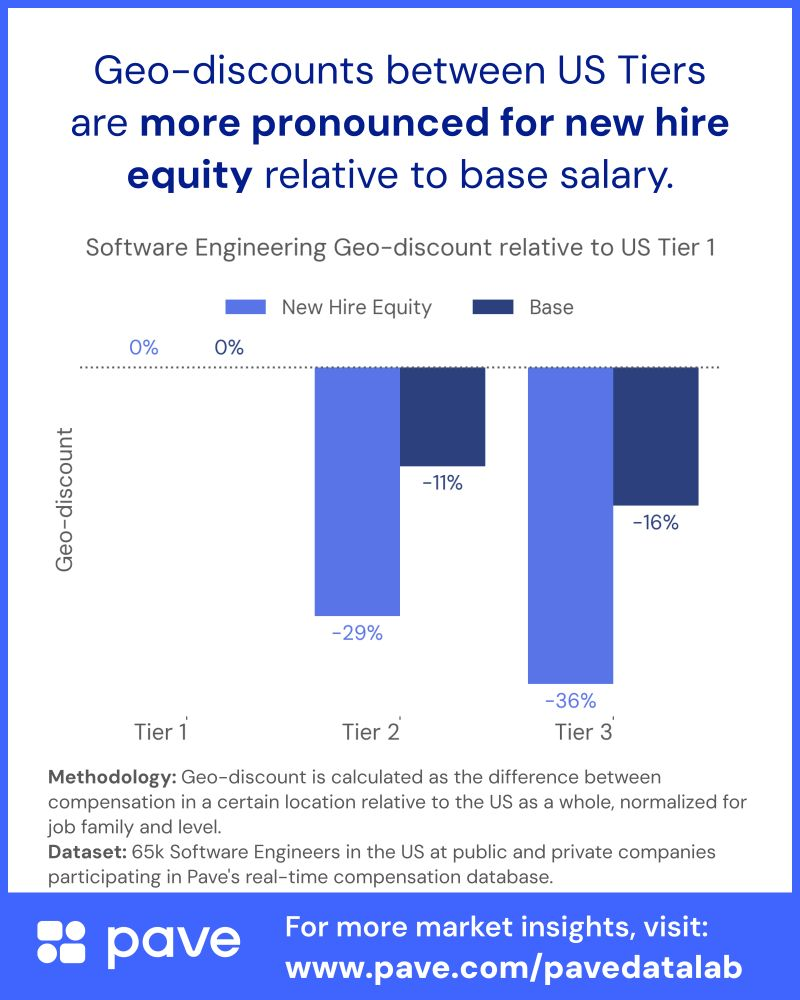
3. 4-year Equity Grants are No Longer the Market Standard
For a long time, the four-year equity vesting schedule has been the norm. But the market standard is shifting—Pave data shows the average grant vesting duration is evolving:
- The average equity grant length at public companies is now ~3.0 years for both new hire and ongoing grants.
- The average equity grant length at private companies is ~3.5 years for ongoing grants—however, new hire grants have mostly returned to 4.0 years after a period of experimentation.
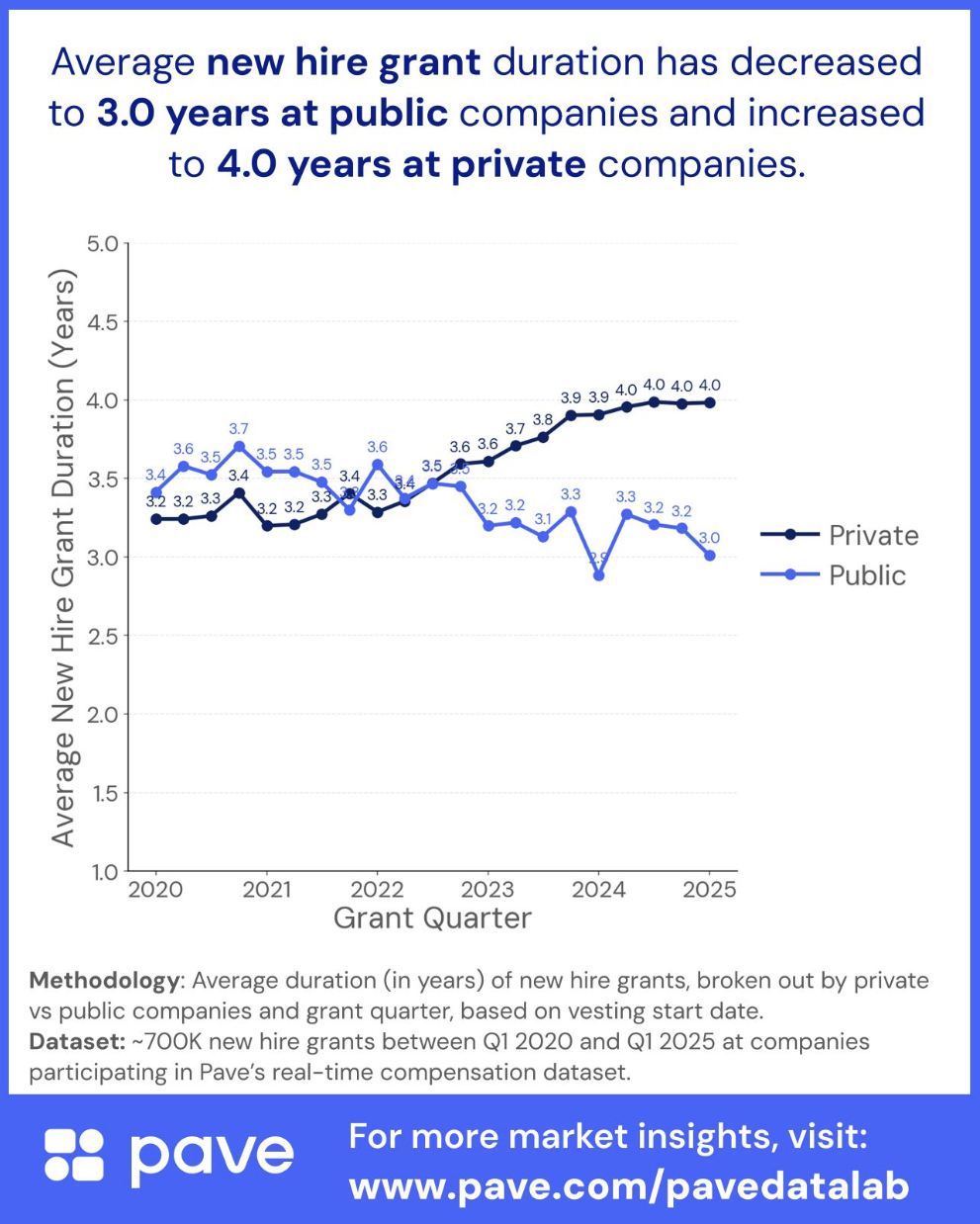
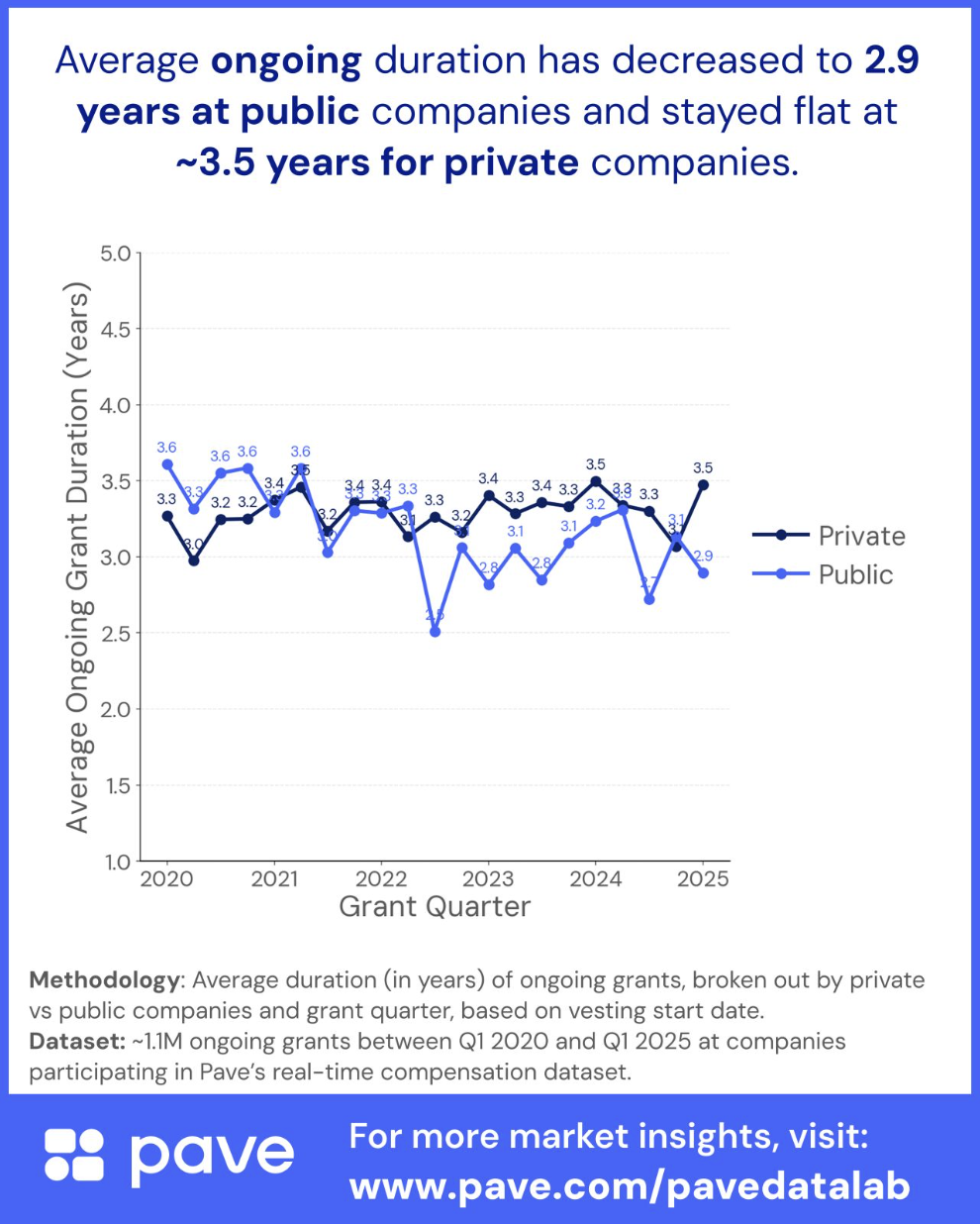
When examining equity compensation benchmarks, start by looking at annualized benchmarks, and then factor in your company’s equity program. Looking at benchmarks that mix one-, two-, three-, and four-year grants into the same sample set risks comparing apples to oranges in a way that can substantially impact equity compensation accuracy.
4. Larger Companies Allocate More Equity Spend To Ongoing Grants
As companies grow, they shift their equity compensation focus from new hires to existing employees. More specifically, the scales tip for companies that have raised over $100M.
This trend isn’t that surprising given that smaller companies typically scale faster—potentially even doubling headcount in six months—so a higher percentage of equity spend goes to new hire grants. As companies mature, employees often expect more predictable, ongoing equity compensation. These larger late-stage companies turn their focus to remaining competitive and retaining their teams, allocating more equity spend to ongoing grants for existing employees.
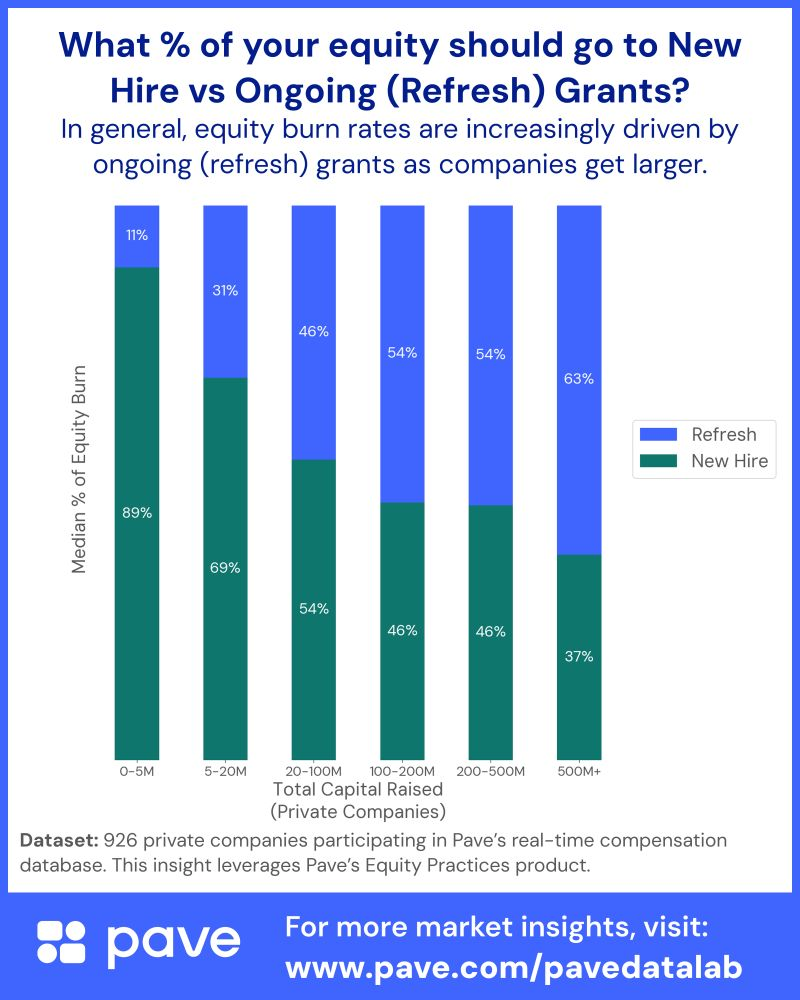
Access In-Depth Equity Compensation Insights
Equity practices can seem like a black box. But at Pave, we believe greater data transparency gives compensation leaders more control and confidence over their equity programs.
That's why we created our AI-powered insights community, Pave Data Lab.
Join the community for access to daily interactive analyses from our data team and invites to weekly polls and monthly surveys.
Get answers to your burning equity compensation questions—sign up now.
Pave is a world-class team committed to unlocking a labor market built on trust. Our mission is to build confidence in every compensation decision.



.jpg)



.jpg)